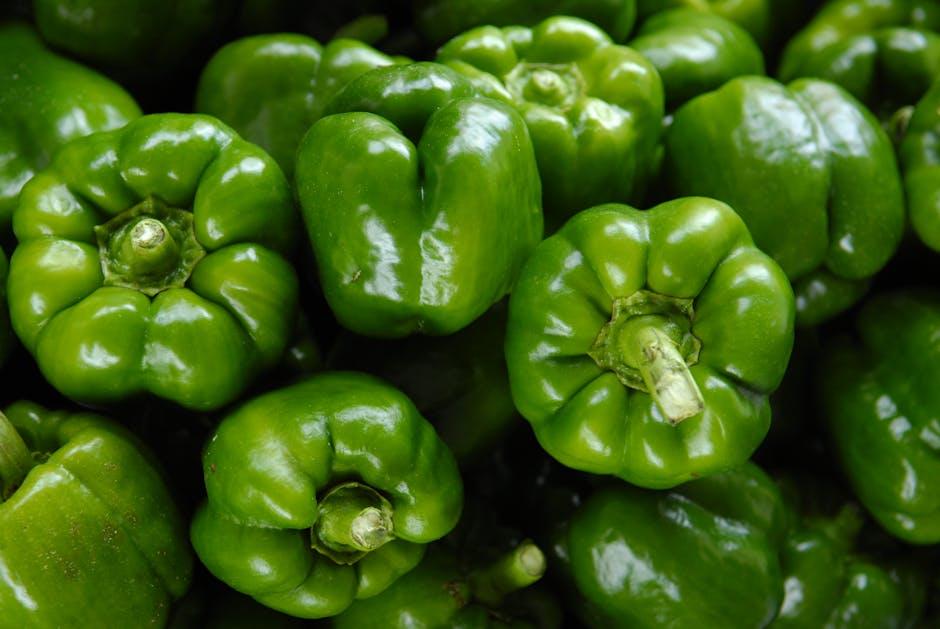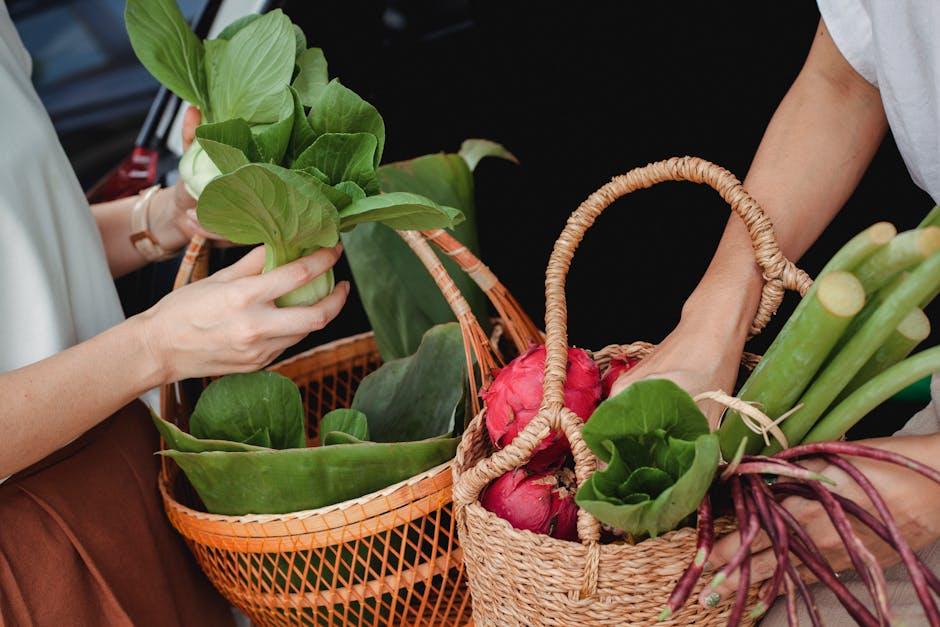As the leaves change color and the air turns crisp, a subtle invitation arises from nature’s bounty: the call to shop seasonally. Embracing the rhythm of the seasons means more than just adjusting your wardrobe—it’s about reconnecting with the freshest, most flavorful ingredients at their peak. Seasonal shopping not only enhances the taste and nutritional value of your meals but also supports local growers and reduces environmental impact. In this article, we explore how tuning into the cycles of nature can transform your kitchen, inspire creativity, and bring a new richness to your daily dishes.
Table of Contents
- Embracing Nature’s Calendar for Peak Flavor
- Exploring Local Markets to Discover Seasonal Gems
- Tips for Selecting and Storing Fresh Ingredients
- Incorporating Seasonal Produce into Everyday Recipes
- Sustainable Shopping: Benefits of Eating with the Seasons
- Q&A
- Future Outlook

Embracing Nature’s Calendar for Peak Flavor
Aligning your groceries with the natural rhythms of the earth elevates culinary delight to an art form. When fruits and vegetables are harvested at their peak, their flavors burst with intensities that outshine supermarket standbys. This connection to nature’s timeline encourages sustainability, reduces the carbon footprint, and supports local farmers, creating a holistic experience that enriches both palate and planet.
Consider this simple guide to seasonal bounty:
- Spring: Vibrant asparagus, tender peas, and crisp radishes
- Summer: Juicy tomatoes, ripe berries, and fragrant basil
- Fall: Sweet pumpkins, earthy mushrooms, and hearty apples
- Winter: Zesty citrus, root vegetables, and leafy greens
| Season | Peak Produce | Flavor Profile |
|---|---|---|
| Spring | Fava Beans, Artichokes | Fresh, Sweet, Slightly Nutty |
| Summer | Peaches, Zucchini | Juicy, Sweet, Earthy |
| Fall | Butternut Squash, Pears | Rich, Sweet, Spiced |
| Winter | Brussels Sprouts, Blood Oranges | Robust, Tangy, Bitter-Sweet |
Exploring Local Markets to Discover Seasonal Gems
When wandering through the bustling aisles of local markets, the joy lies in unearthing nature’s freshest offerings as they come into season. Each stall becomes a treasure trove, brimming with vibrant fruits, crisp vegetables, and aromatic herbs that invite culinary creativity. Engaging with passionate vendors offers insights into the story behind each ingredient—from the farm it was harvested on to the ideal way to prepare it. This firsthand connection not only enriches your shopping experience but also ensures you bring home produce at its peak, guaranteeing maximum flavor and nutrition.
Embracing seasonal gems means embracing variety and sustainability. By aligning your shopping habits with nature’s rhythm, you encourage eco-friendly practices and support local growers. Here are some benefits of shopping local seasonally:
- Enhanced freshness: Ingredients spend less time in transit, arriving fresh and flavorful.
- Better nutrition: Peak-season produce retains more vitamins and minerals.
- Eco-conscious choice: Reducing carbon footprint by sourcing nearby.
- Economic support: Strengthening community farmers and artisans.
| Season | Featured Local Produce | Flavor Profile |
|---|---|---|
| Spring | Asparagus, Rhubarb, Peas | Fresh, green, slightly tart |
| Summer | Tomatoes, Berries, Zucchini | Juicy, sweet, vibrant |
| Autumn | Pumpkins, Apples, Mushrooms | Earthy, sweet-spiced, robust |
| Winter | Brussels Sprouts, Citrus, Kale | Bright, tangy, hearty |
Tips for Selecting and Storing Fresh Ingredients
When selecting fresh ingredients, trust your senses as your best guide. Look for vibrant colors, crisp textures, and pleasant aromas which indicate peak freshness. Avoid produce with bruises, soft spots, or discoloration, as these are signs of aging or poor handling. For fruits and vegetables, inspecting the surface closely can reveal hidden damage. Additionally, seasonal markets often offer fresher options than supermarkets, so take advantage of local harvests for superior quality.
Proper storage is just as crucial to maintain freshness and flavor. Keep in mind that different ingredients require specific conditions; leafy greens thrive in a cool, humid environment, while onions and garlic prefer a dry, dark place away from potatoes to prevent sprouting. Below is a handy guide to help you store various seasonal ingredients effectively:
| Ingredient | Optimal Storage | Storage Tip |
|---|---|---|
| Tomatoes | Room Temperature | Keep stem-side down to prolong freshness |
| Leafy Greens | Refrigerator, High Humidity | Wrap in damp paper towel inside a plastic bag |
| Stone Fruits | Room Temperature then Refrigerate | Allow to ripen before chilling |
| Herbs | Refrigerator in Water | Trim stems and cover with a plastic bag |
Incorporating Seasonal Produce into Everyday Recipes
Embracing the rhythm of the seasons not only enhances the flavors of your dishes but also supports sustainable eating habits. By incorporating nature’s freshest offerings, meals become vibrant celebrations of taste and nutrition. For instance, spring’s tender asparagus and strawberries bring a bright, fresh sweetness, while autumn’s pumpkins and apples infuse warmth and comfort. Experimenting with these ingredients encourages culinary creativity, inviting you to transform simple recipes into delightful, seasonal experiences.
Tips for Seamlessly Adding Seasonal Produce:
- Swap out out-of-season vegetables with their fresh counterparts—try zucchini instead of summer squash, or kale in place of spinach.
- Add seasonal fruits to salads, desserts, or even breakfast bowls for a natural burst of flavor.
- Utilize preserved seasonal goods like pickled cucumbers or dried cherries to extend flavor diversity year-round.
| Season | Featured Produce | Recipe Idea |
|---|---|---|
| Spring | Asparagus, Strawberries | Roasted asparagus salad with strawberry vinaigrette |
| Summer | Tomatoes, Zucchini | Grilled vegetable skewers with fresh tomato salsa |
| Autumn | Pumpkin, Apples | Pumpkin soup with caramelized apple garnish |
| Winter | Brussels sprouts, Citrus | Roasted Brussels sprouts with citrus glaze |
Sustainable Shopping: Benefits of Eating with the Seasons
Embracing the natural rhythm of the seasons offers more than just a feast for the senses; it promotes environmental responsibility and supports local economies. When we choose produce that is harvested at the peak of its season, we reduce the carbon footprint associated with long-distance transportation and energy-intensive storage. Moreover, this practice fosters biodiversity and encourages sustainable farming techniques that are gentler on soil and ecosystems. Incorporating seasonal ingredients allows us to enjoy a vibrant palette of flavors and textures that reflect the unique qualities of each time of year, transforming everyday meals into celebrations of nature’s bounty.
From a nutritional standpoint, seasonal fruits and vegetables often reach consumers faster after harvest, preserving their freshness and nutrient density. This means higher levels of vitamins, minerals, and antioxidants that benefit our health. Shopping seasonally also invites variety into our diets, encouraging culinary creativity as we experiment with different ingredients and recipes throughout the year. Consider this simple guide to seasonal produce to refresh your shopping list:
| Season | Sample Produce | Benefits |
|---|---|---|
| Spring | Asparagus, Strawberries, Peas | Rich in antioxidants and vitamins |
| Summer | Tomatoes, Corn, Peaches | High in hydration and fiber |
| Fall | Pumpkins, Apples, Kale | Supports immune health and digestion |
| Winter | Cabbage, Citrus, Sweet Potatoes | Boosts energy and immunity |
Q&A
Q&A: Seasonal Shopping for Fresh Ingredients
Q1: What does “seasonal shopping” for fresh ingredients mean?
A: Seasonal shopping involves choosing fruits, vegetables, and other fresh ingredients that are naturally harvested during a particular time of year. This approach aligns your grocery list with nature’s calendar, resulting in fresher, more flavorful, and often more affordable produce.
Q2: Why is eating seasonally better than buying year-round produce?
A: Seasonal produce is typically fresher because it hasn’t traveled long distances or spent weeks in storage. This enhances flavor and nutritional value. Plus, it’s often more environmentally friendly and supports local farmers and markets.
Q3: How does one find out what’s in season?
A: You can check seasonal produce guides online, visit local farmers’ markets, or talk to your grocer. Many regions also have dedicated apps or websites that highlight which items are at their peak during certain months.
Q4: Does seasonal shopping mean I can only cook with certain ingredients at specific times?
A: Not at all! While seasonal shopping encourages using fresh, in-season produce, it’s flexible. You can always mix seasonal items with pantry staples or frozen ingredients. It’s more about embracing variety and freshness than strict limitations.
Q5: Are there disadvantages to seasonal shopping?
A: The main challenge might be adjusting recipes or menus according to what’s available, which requires creativity and flexibility. Sometimes, favorite out-of-season ingredients aren’t accessible, but this also opens doors to discovering new flavors.
Q6: How does seasonal shopping affect budget?
A: Shopping seasonally often helps reduce costs, since items harvested abundantly in season are less expensive. Additionally, less spoilage occurs as produce is fresher, reducing waste and saving money.
Q7: Can seasonal shopping help reduce food waste?
A: Absolutely. Eating what’s fresh and local means produce is less likely to spoil during transport or storage. It encourages planning meals around available ingredients, which leads to smarter purchasing and cooking habits.
Q8: What are some examples of spring and summer seasonal produce?
A: Spring might bring peas, asparagus, rhubarb, and strawberries, while summer offers tomatoes, zucchini, sweet corn, peaches, and berries. Each season has its distinct bounty to explore.
Q9: How can beginners start with seasonal shopping?
A: Start by choosing one or two ingredients that are in season and experiment with simple recipes featuring them. Visiting farmers’ markets or joining a community-supported agriculture (CSA) program can also introduce you to local seasonal options.
Q10: Does seasonal shopping work everywhere?
A: Yes, though what’s seasonal varies by climate and region. Tropical areas might have different growing cycles than temperate zones. The key is to learn the natural rhythms of your local environment.
Seasonal shopping opens a world of freshness, flavors, and sustainability—inviting us to cook and eat in harmony with the changing seasons.
Future Outlook
As the seasons turn, so do the opportunities to infuse your kitchen with nature’s freshest offerings. Embracing seasonal shopping not only connects us to the rhythms of the earth but also enriches our meals with vibrant flavors and nourishing ingredients at their peak. So next time you plan your grocery list, let the changing calendar be your guide—allowing each season’s bounty to inspire your culinary creations and bring a thoughtful freshness to your table all year round.

